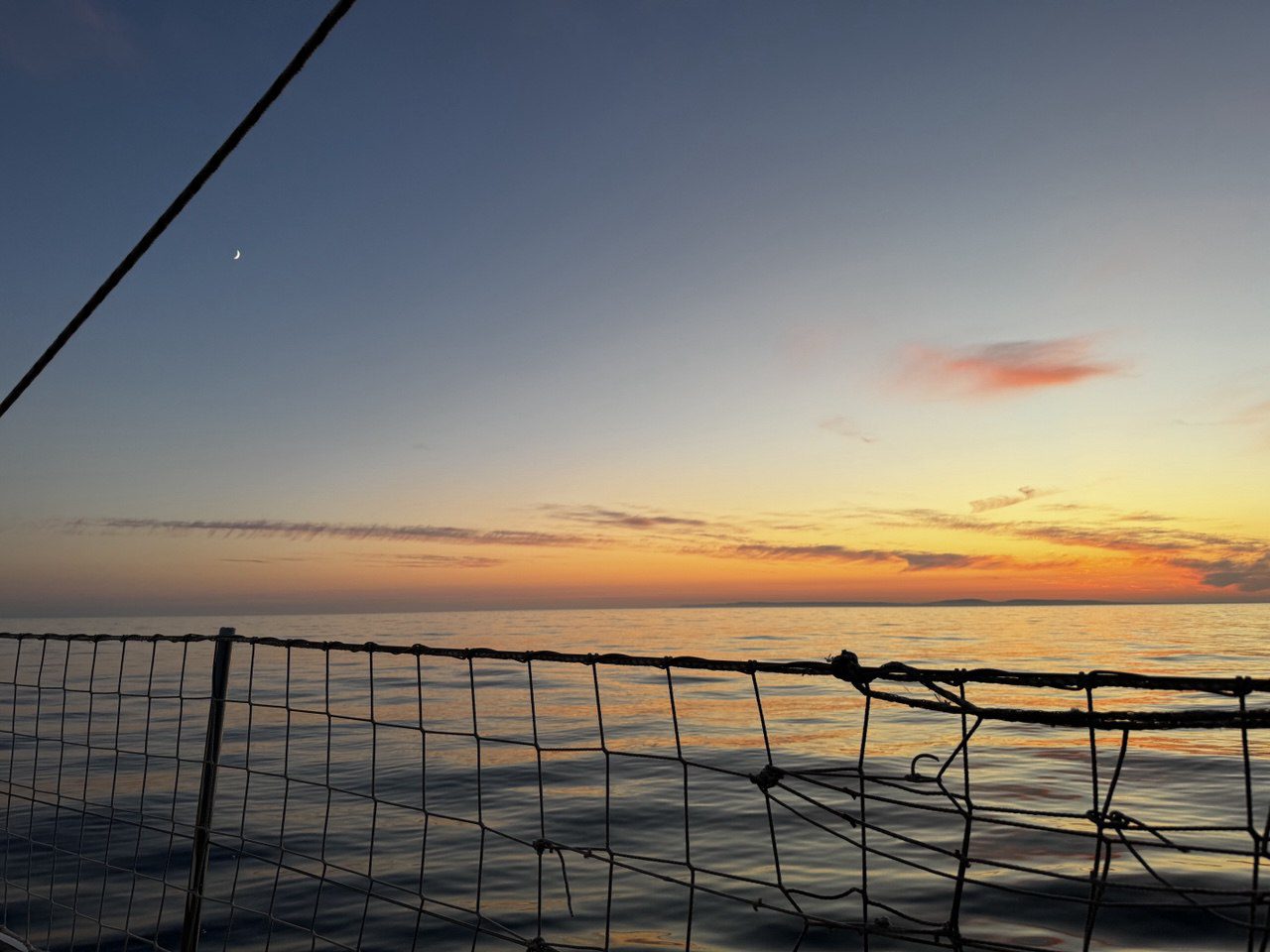The area around the Canaries was pretty tricky. Lots of wind holes and even more marine traffic made the passage difficult. And we took the wrong turn more than once. Some boats were only a few miles away and would get much better winds. This can be very frustrating at times.
Then one night we were sailing along quite nicely with full main and spinnaker up. We spotted lightning on the horizon and decided to unplug our mast head instruments to avoid damage to the electronics in case we were hit. I was below deck preparing breakfast for the other watch when I was asked to come back on deck to help with a gybe. It only took me a few seconds to put the lifejacket on and get on deck, but the plans had already changed. We were going to drop the spinnaker, as the wind would pick up shortly. We asked for more people to get on deck and help with the drop when the first gust of the squall hit and put us on the side. We had to ease the vang to regain control, but it wasn’t enough. So we also had to ease the main and spinnaker sheets, which made the sails flog. And in that flogging our spinnaker tore quite badly, just before we could take it down.
It was the first time we were hit by a squall. The wind turned quite a bit and the wind speed presumably doubled. We cannot say for sure as our wind instruments are on top of the mast and had been disconnected at that time. It is sad to see the sail damaged but the team have assessed the damage and are currently working out a repair plan. Luckily no one on board was damaged and after the initial shock passed, the mood was getting better. Until we hit the next wind hole and were just drifting around.
In the following days we were sailing more conservatively to prevent further damage. Nevertheless, we regularly achieved boat speeds above 10 knots, also at night. It is an exhilarating feeling when the boat starts to surf down the wave. On the other hand, this requires utmost attention on the helm. If something goes wrong in those conditions, there is the risk to either broach or crash gybe. Both bear the risk of causing further damage to our sails. And that’s among the last things we want to do.
Today came the next surprise. In a routine check at the end of my watch I discovered that the turning block for our spinnaker halyard at the mast top was hanging in an unusual position. We thus decided to take the spinnaker down to assess the situation. On the attempt to take down the sail we learnt, that the halyard had jammed in the broken turning block. So while three of us were hanging onto the sail trying to prevent it from inflating again, our first mate Brian prepared to climb the mast. It took us almost an hour to get the sail down. Only after I could go for my well deserved off-watch to recover a bit. The bad news is that both the port side turning block as well as the starboard turning block are completely destroyed. On the other hand our Code 3 spinnaker did survive the lengthy manoeuvre without any damage. So as soon as we have repaired one of those turning blocks we can hoist it again. But that requires still a lot of work. Until then we continue sailing along, hoping to pass the Cap Verdes in the next few days. It will remain interesting.

Leave a Reply